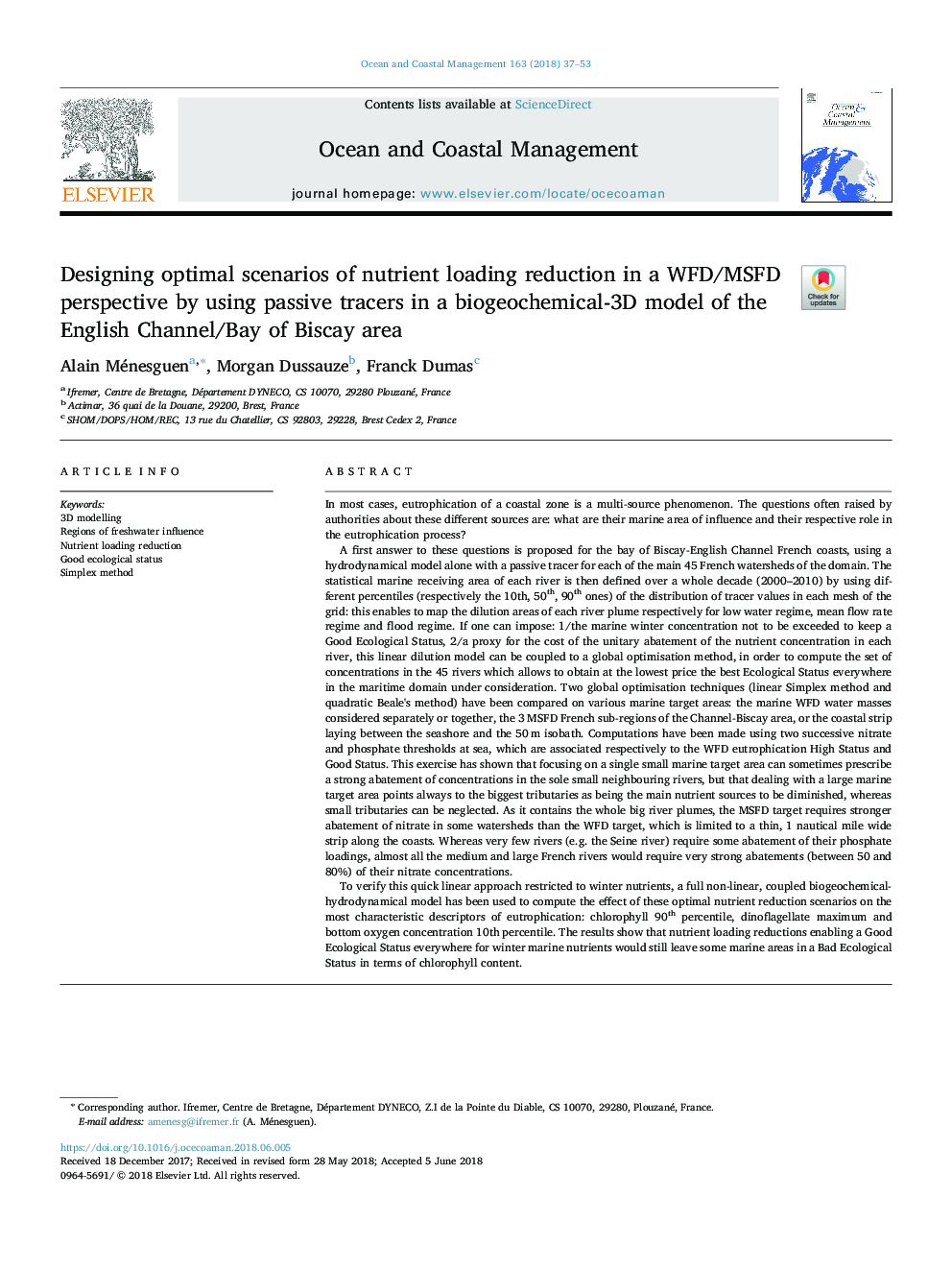| Article ID | Journal | Published Year | Pages | File Type |
|---|---|---|---|---|
| 8060502 | Ocean & Coastal Management | 2018 | 17 Pages |
Abstract
To verify this quick linear approach restricted to winter nutrients, a full non-linear, coupled biogeochemical-hydrodynamical model has been used to compute the effect of these optimal nutrient reduction scenarios on the most characteristic descriptors of eutrophication: chlorophyll 90th percentile, dinoflagellate maximum and bottom oxygen concentration 10th percentile. The results show that nutrient loading reductions enabling a Good Ecological Status everywhere for winter marine nutrients would still leave some marine areas in a Bad Ecological Status in terms of chlorophyll content.
Related Topics
Physical Sciences and Engineering
Earth and Planetary Sciences
Oceanography
Authors
Alain Ménesguen, Morgan Dussauze, Franck Dumas,
